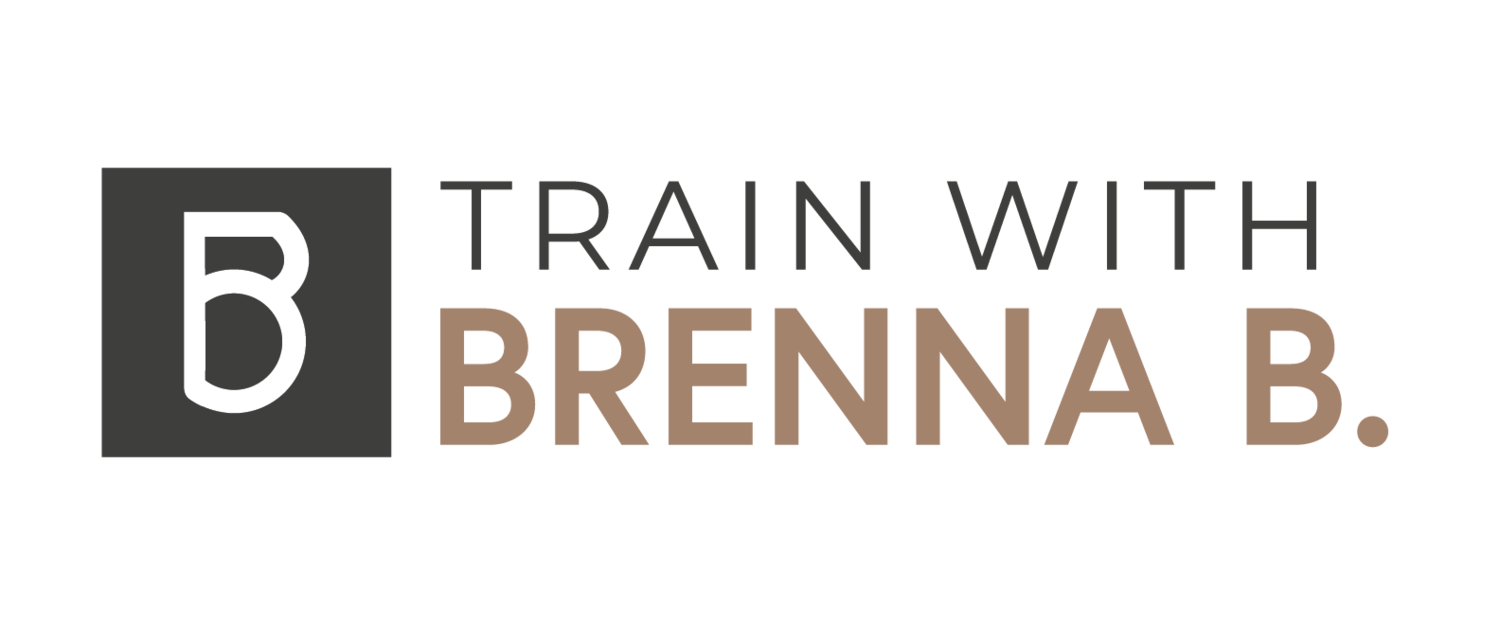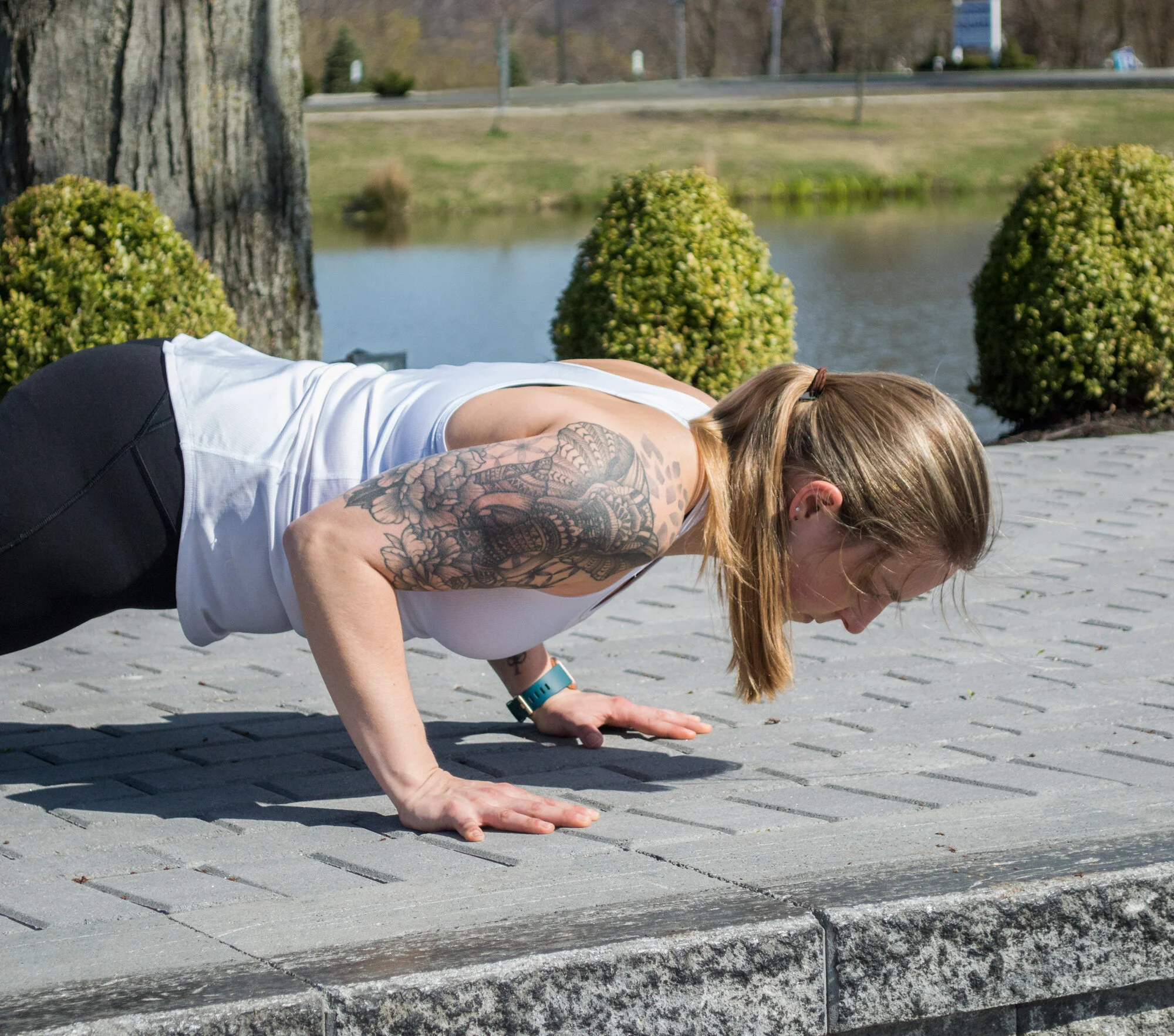How to Improve Your Push-ups
Have you never been able to do a full push-up?
Do you want to be able to do more push-ups than you currently can?
Have push-ups have never felt good for you?
Are you looking to build strength in your upper body?
Push-ups can be a great exercise for developing strength in your upper body and core. However, building the strength to be able to do your first full push-up or even to improve how many push-ups you can complete can seem like an impossible task.
Below are a few of my favorite tips and exercises to help you increase your strength to get your first push-up or to improve how many push-ups you can currently complete.
“Pull” before you “push”
This is especially helpful if push-ups just don’t feel good on your body or if you find your shoulders rounding forward in the bottom of the push-ups. However, performing a pull exercise before a push-up will benefit most people by helping to activate the muscles in the back and improve shoulder stability. There are many different pull exercises that can be completed before doing push-ups. Below are a few of my favorite options.
TRX (or suspension trainer) Row
The closer your feet are to your anchor point the harder this exercise becomes. Find a position that allows you to go through a full range of motion without arching your back or letting your hips drop.
As you perform the row, think about pulling from your armpit and squeezing your shoulder blades together.
Keep a slight tuck of your chin. Don’t look up at the ceiling or down at your toes.
Make sure your hips come with you during the row. Your body should stay in a straight line throughout the entire motion.
This row can be completed with a neutral grip (palms facing inwards) or with your palms facing toward the floor.
2. Standing Band Resisted Row (prone grip)
Think about pulling from your armpit and squeezing your shoulder blades together as you row.
Maintain a slight bend in your knees/legs.
Try to keep your ribs stacked over your pelvis. Don’t overly arch or round your back.
Keep your chest lifted as you perform the row.
3. Wall Plank Row
Press hard with your hand into the wall.
Maintain a slight bend in your knees/legs, stay lifted on your toes.
Try to keep your ribs inline with your pelvis. Don’t overly arch or round your back.
Think about rowing back towards your hip.
Keep your hips as square as possible as your perform the row.
Elevate Your Hands
Choose a surface that allows you to maintain great form through the push-up. This could be a surface like a counter-top, chair, bench, stair, step etc. Work on getting really strong in this position and then lowering the surface towards the floor as you get stronger.
Hands Elevated Push-ups
Place your hands approximately shoulder width apart, you can be a little wider if that feels better for you.
Maintain a neutral spine by engaging your core and squeezing the muscles in your legs and glutes.
Think about rowing your body into the push-up and then pressing up.
Don’t let you head drop as you perform the push-up.
Scapular/Shoulder Stability
Improving your scapular stability and strength can help improve your strength push-ups. The scapular muscles are the muscles that are surrounding your shoulder blades and help your shoulder blades retract, protract, and move upwards and downwards. Here are a few of my favorite exercises for scapular strength and stability.
Serratus Wall Walks
Place a band around your forearms, closer to your elbows than your hands.
Keep tension on the band as you walk your arms up the wall. Don’t let your hands come closer together as you walk your arms up the wall.
Maintain a neutral spine. Don’t overly arch your back.
2. Serratus Wall Slides
Place a band around your forearms, closer to your elbows than your hands.
Keep tension on the band as you walk your arms up the wall. Don’t let your hands come closer together as you walk your arms up the wall.
Maintain a neutral spine. Don’t overly arch your back.
3. Bottoms Up Kettlebell Press
Use a light to moderate weight kettlebell.
Keep your hand/forearm inline with your shoulder in the start position and as you press the weight overhead.
Maintain a neutral spine. Don’t overly arch your back.
Keep your eyes on the the kettlebell throughout the movement.
4. Scap Push-ups
Place your hands approximately shoulder width apart, you can be a little wider if that feels better for you.
Maintain a neutral spine by engaging your core and squeezing the muscles in your legs and glutes.
Keep your elbows as straight as possible as your perform this movement.
Don’t let you head drop as you perform the push-up.
6. TRX “Y” Raise
The closer your feet are to your anchor point the harder this exercise becomes. Find a position that allows you to go through a full range of motion without arching your back or letting your hips drop.
As you perform the “y” raise, think about pulling from your armpit and squeezing your shoulder blades together.
Keep a slight tuck of your chin. Don’t look up at the ceiling or down at your toes.
Make sure your hips come with you during the row. Your body should stay in a straight line throughout the entire motion.
This exercise is harder than it appears. Start further away from the anchor point than you think and then you can increase the difficulty by stepping forward if needed.
Push-up Variations
Here are a few example of push-up variations that you can use to help improve your push-ups. They variations will help to improve your strength in your chest, triceps, shoulders, and core muscles.
Negative (Eccentric) Push-ups
Place your hands approximately shoulder width apart, you can be a little wider if that feels better for you.
Maintain a neutral spine by engaging your core and squeezing the muscles in your legs and glutes.
Think about rowing your body into the push-up and then pressing up.
Don’t let you head drop as you perform the push-up.
Lower your body down to the floor as slowly as you can.
2. Up/Down Planks
Place your hands approximately shoulder width apart, you can be a little wider if that feels better for you.
Maintain a neutral spine by engaging your core and squeezing the muscles in your legs and glutes.
As you lower from your hands onto your forearms make sure your take your hips with you. Don’t leave your hips up in the air.
Make sure you lead with both arms. This can be done by alternating arms each rep or by completing all reps on one side and then switching to lead with the opposite arm.

